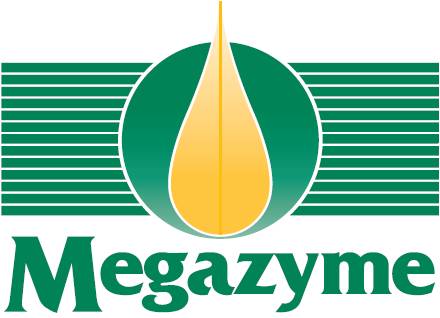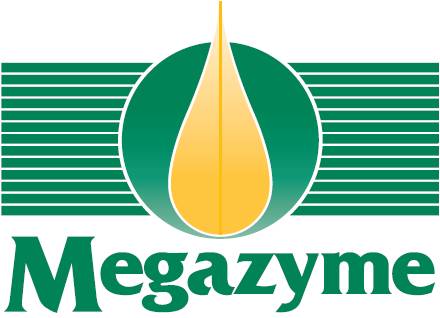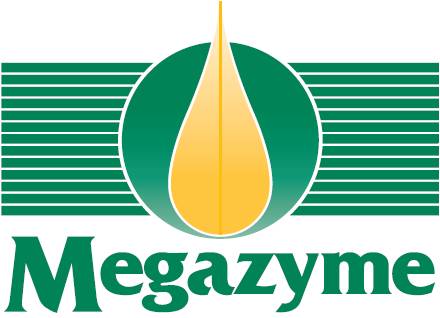WHATMAN Polycap 36TF囊式过滤器0.2UM孔径6700-3602
WHATMAN Polycap 36TF囊式过滤器0.2UM孔径6700-3602
Polycap TF 滤器由耐用、疏水的聚四氟乙烯膜(PTFE)和聚丙烯外壳制成,专门为过滤有机和化学腐蚀性强的溶液。Polycap TF 36, 0.2μm, 带FNPT进口和出口。
WHATMAN Polycap 36TF囊式过滤器0.2UM孔径6700-3602特点:
- 兼容绝大多数溶剂有机溶剂,可加压加热处理,支持完整性测试
- 提供 0.1μm,0.2μm,0.45μm和1.0 μm孔径
- 可在121℃下高压灭菌20分钟。可重复多次高压灭菌。然而,重复操作取决于操作者。装置应该避免交叉污染。高压灭菌后应进行完整性测试,与乙醇灭菌相容。
- ISO质量体系10000级的清洁室内环境下生产
订购信息:
| 2601 | POLYCAP 36 0.2 PTFE 5/PK A/A |
| 2601T | POLYCAP 36 0.2 PTFE 5/PK G/G |
| 2602S | POLYCAP 36 0.45 PTFE 5/PK H/H |
| 2603 | POLYCAP 36 1.0 PTFE 5/PK A/A |
| 2603T | POLYCAP 36 1.0 PTFE 5/PK G/G |
| 2606T | POLYCAP 36 0.2 AS 5/PK G/G |
| 2609T | HEPA-CAP 36 5/PK G/G |
| 2610T | POLYCAP 36 .2/.45 HD 5/PK G/G |
| 2611 | POLYCAP 36 .45/1.0 HD 5/PK A/A |
| 2611T | POLYCAP 36 .45/1.0 HD 5/PK G/G |
| 2612T | POLYCAP 36 1.0/5.0 HD 5/PK G/G |
| 2613T | POLYCAP 36 5./10. HD 5/PK G/G |
| 2614T | POLYCAP 36 10/20 HD 5/PK G/G |
| 2642 | POLYCAP 36 0.2 PES 5/PK A/A S |
| 2700T | POLYCAP 75 0.1 PTFE 5/PK G/G |
| 2702M | POLYCAP 75 0.2 PTFE 5/PK F/F |
| 2702T | POLYCAP 75 0.2 PTFE 5/PK G/G |
| 2703T | POLYCAP 75 0.45 PTFE 5/PK G/G |
| 2706T | POLYCAP 75 0.2 AS 5/PK G/G |
| 2707NS | POLYCAP 75 0.45 AS 5/PK A/A |
| 2709T | HEPA-CAP 75 5/PK G/G |
| 2710 | POLYCAP 75 0.2/.45 HD 5/PK D/D |
| 2711T | POLYCAP 75 .45/1.0 HD 5/PK G/G |
| 2712 | POLYCAP 75 1.0/5.0 HD 5/PK D/D |
| 2712M | POLYCAP 75 1.0/5.0 HD 5/PK F/F |
| 2712T | POLYCAP 75 1.0/5.0 HD 5/PK G/G |
| 2713 | POLYCAP 75 5.0/10 HD 5/PK D/D |
| 2713T | POLYCAP 75 5/10 HD 5/PK G/G |
| 2714 | POLYCAP 75 10/20 HD 5/PK D/D |
| 2714T | POLYCAP 75 10/20 HD 5/PK G/G |
| 2800T | POLYCAP 150 0.1 PTFE 5/PK G/G |
| 2801 | POLYCAP 150 0.2 PTFE 5/PK H/H |
| 2802T | POLYCAP 150 0.2 PTFE 5/PK G/G |
| 2803T | POLYCAP 150 0.45 PTFE 5/PK G/G |
| 2804T | POLYCAP 150 1.0 PTFE 5/PK G/G |
| 2806 | POLYCAP 150 0.2 AS 5/PK D/D S |
| 2807 | POLYCAP 150 0.45 AS 5/PK D/D S |
| 2809 | HEPACAP 150 5/PK D/D |
| 2809T | HEPACAP 150 5/PK G/G |
| 2810 | POLYCAP 150 .2/.45 HD 5/PK D/D |
| 2810T | POLYCAP 150 .2/.45 HD 5/PK G/G |
| 2812T | POLYCAP 150 1/5 HD 5/PK G/G |
| 2813 | POLYCAP 150 5/10 HD 5/PK D/D |
| 2813T | POLYCAP 150 5/10 HD 5/PK G/G |
| 2814T | POLYCAP 150 10/20 HD 5/PK G/G |
| 6700-3602 | POLYCAP 36 0.2 PTFE 1/PK A/A |
| 6700-3610 | POLYCAP 36 1.0 PTFE 1/PK A/A |
| 6700-7501 | POLYCAP 75 0.1 PTFE 1/PK A/A |
| 6700-7502 | POLYCAP 75 0.2 PTFE 1/PK A/A |
| 6700-7504 | POLYCAP 75 0.45 PTFE 1/PK A/A |
| 6701-7510 | POLYCAP 75 1.0 PTFE 1/PK A/A |
| 6702-3600 | HEPA-CAP 36 1/PK A/A |
| 6702-7500 | HEPA-CAP 75 1/PK B/B |
| 6702-9500 | HEPA-CAP 150 1/PK B/B |
| 6703-3610 | POLYCAP 36 1.0 HD 1/PK A/A |
| 6703-3611 | POLYCAP 36 10.0 HD 1/PK A/A |
| 6703-3621 | POLYCAP 36 20.0 HD 1/PK A/A |
| 6703-3650 | POLYCAP 36 5.0 HD 1/PK A/A |
| 6703-7510 | POLYCAP 75 1.0 HD 1/PK B/B |
| 6703-7511 | POLYCAP 75 10.0 HD 1/PK B/B |
| 6703-7521 | POLYCAP 75 20.0 HD 1/PK B/B |
| 6703-7550 | POLYCAP 75 5.0 HD 1/PK B/B |
| 6704-1500 | CARBON CAP 150 GF 1/PK B/B |
| 6704-7500 | CARBON CAP 75 GF 1/PK B/B |
| 6704-9502 | POLYCAP 150 0.2 PES 5/PK H/H |
| 6705-3600 | POLYC36SPF GF/1.0 PES 1/PK A/A |
| 6705-3602 | POLYCAP 36 0.2 AS 1/PK A/A S |
| 6705-3604 | POLYCAP 36 0.45 AS 1/PK A/A S |
| 6705-7500 | POLYC75SPF GF/1.0 PES 1/PK A/A |
| 6705-7502 | POLYCAP 75 0.2 AS 1/PK A/A S |
| 6705-7504 | POLYCAP 75 0.45 AS 1/PK A/A S |
| 6705-7510 | POLYCAP 75 1.0 AS 1/PK B/B S |
| 6706-3602 | POLYCAP36 0.2 AS 1/PK A/A S/WB |
| 6706-7502 | POLYCAP75 0.2 AS 1/PK A/A S/WB |
| 6708-3602 | POLYCAP 36 0.2 AS 1/PK B/B S |
| 6708-7502 | POLYCAP 75 0.2 AS 1/PK B/B S |
| 6708-7504 | POLYCAP 75 0.45 AS 1/PK B/B S |
| 6709-3602 | POLYCAP 36 0.2 AS 1/PK F/A S |
| 6709-7502 | POLYCAP 75 0.2 AS 1/PK F/D S |
| 6710-3602 | POLYCAP 36 0.2 PTFE 1/PK B/B |
| 6710-7502 | POLYCAP 75 0.2 PTFE 1/PK B/B |
| 6711-3601 | POLYCAP 36 0.1 PTFE 1/PK F/A |
| 6711-3602 | POLYCAP 36 0.2 PTFE 1/PK F/A |
| 6711-3604 | POLYCAP 36 0.45 PTFE 1/PK F/A |
| 6711-7502 | POLYCAP 75 0.2 PTFE 1/PK F/A |
| 6713-1075 | POLYVENT 1000 0.2 PTFE 1/PK |
| 6713-5036 | POLYVENT 500 0.2 PTFE 1/PK |
| 6714-3601 | POLYC36 0.2/0.1 PES 1/PK A/A S |
| 6714-3602 | POLYC36 0.2/0.2 PES 1/PK A/A S |
| 6714-3604 | POLYC36 .6/0.45 PES 1/PK A/A S |
| 6714-6004 | POLYCAP GW 0.45 PES 1/PK |
| 6714-7501 | POLYC75 0.2/0.1 PES 1/PK A/A S |
| 6714-7502 | POLYC75 0.2/0.2 PES 1/PK A/A S |
| 6715-3601 | POLY36 .2/.1 PES 1/PK A/A/S/WB |
| 6715-3602 | POLY36 .2/.2 PES 1/PK A/A/S/WB |
| 6715-3604 | POLY36 .6/.45PES 1/PK A/A/S/WB |
| 6715-3682 | POLY36 .8/.2PES 1/PK A/A/S/WB |
| 6715-7502 | POLY75 .2/.02 TC 1/PK A/A/S/WB |
| 6715-7582 | POLY75 .8/.02PES 1/PK A/A/S/WB |
| 6716-3602 | POLY36 .2/.2 PES 1/PK F/A/S/WB |
| 6717-7504 | POLYCA75 .6/.45 PES 1/PK B/B/S |
| 6717-7510 | POLYC75 1.0/1.0 PES 1/PK B/B/S |
| 6717-9501 | POLY150 0.2/0.1 PES 1/PK B/B/S |
| 6717-9502 | POLY150 0.2/0.2 PES 1/PK B/B/S |
| 6717-9504 | POLY150 .6/0.45 PES 1/PK B/B/S |
| 6718-9502 | POLY150 .2/.2 PES 1/PKB/B/S/WB |
| 6718-9582 | POLY150 .8/0.2PES 1/PKB/A/S/WB |



